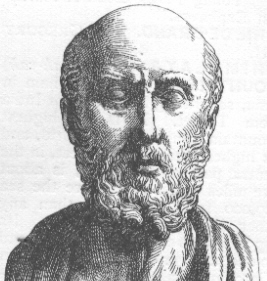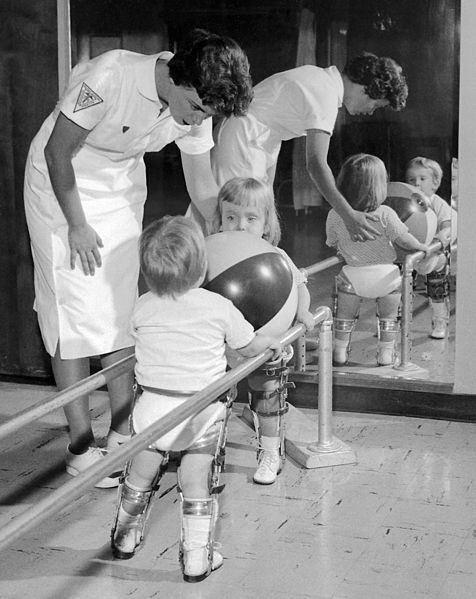Enhance your health with free online physiotherapy exercise lessons and videos about various disease and health condition
History of Physical Therapy

The Very Beginning- Early history of Physical Therapy
Physical therapy's first documented account is from the old master of medicines- Hippocrates. In the year 460 BC, Hippocrates introduced the idea of manual manipulation for pain relief. Since then, physiotherapy has evolved from simple massage to a complex portfolio of therapies with many specialized applications.
In Ancient Greece circa 460 BC, Hector practiced a physiotherapy technique called “hydrotherapy” – which is Greek for water treatment. The Greeks, however, were not the only people practicing physical therapy; ancient writings from Persia, China and Egypt also describe the benefits of exercise, movement and massage for ailments.
History of physical therapy (nineteenth century)

For centuries, the field of physical therapy saw relatively little advancement. It wasn't until the nineteenth century that a cohesive group of physical therapy practitioners was formed.
- Per Henrik Ling, “Father of Swedish Gymnastics,” who founded the Royal Central Institute of Gymnastics (RCIG) in 1813 for massage, manipulation, and exercise. The Swedish word for physical therapist is sjukgymnast = someone involved in gymnastics for those who are ill.
- In 1887, PTs were given official registration by Sweden’s National Board of Health and Welfare.
- In 1894 four nurses in Great Britain formed the Chartered Society of Physiotherapy.
- The School of Physiotherapy, established by the University of Otago in New Zealand in 1913, and Reed College in Portland (Oregon), founded in 1914, are the early examples of the institutions that taught physical therapy.
- From 1917 to 1918, the therapy was performed widely, to cure people injured in the World War I. The treatment was considered as 'rehabilitation therapy' during that time.
- An outbreak of polio in the 1920s placed increased demand on physical therapists, which lead to more breakthroughs in treatment techniques. Additional improvements were seen in the following several decades as a result of increased medical and surgical knowledge.
- The year 1921 holds significance in the history of physical therapy. A research paper on the therapy was published in the PT Review, in March 1921, in the United States. It was during this time that Mary McMillan, the first physical therapy aide, established the American Women's Physical Therapeutic Association. The organization's name was later on changed to the American Physical Therapy Association (APTA). Due to her significant contribution in the reconstruction aide services, Mary McMillan came to be known as the 'Mother of Physical Therapy'.
- Until the Second World War, most physical therapies were done in hospitals on patients recovering from surgeries, injuries or other conditions. Specialty physical therapy clinics were founded during the war to provide treatment for the thousands of wounded soldiers that needed rehabilitation following hospital stays. This transition to outpatient care represented the growing popularity of physical therapy.
History of physical therapy (1950's- 1980's)
Until the early 1950s, physical therapy was performed only in hospitals. It was only in the late 1950s that physical therapists started treating the patients beyond hospitals. In 1974, many doctors in the United States specialized in physical therapy. A separate division - the Orthopedic Section - was formed in the APTA, for the physical therapists who had specialized in Orthopedics.
The manual therapy was popularized worldwide in 1974, when the ‘International Federation of Orthopedic Manipulative Therapy’ was established. Further development in the field of physiotherapy was recorded in the 1980s, when the use of computers became prevalent in Medical Science. Various devices, such as electrical stimulators, were introduced for practising physiotherapy, which increased the effectiveness of the treatment.
During the next two decades, the profession of physical therapy increasingly diversified. Specializations, such as cardiopulmonary physical therapy, skin therapy, neurological therapy and sports therapy, were recognized by APTA , and the discipline continued to become more widely regarded.
History of physical therapy (last two decades)
Today, physiotherapy is used to treat a variety of ailments and conditions. Patients may seek treatment for back pain, osteoarthritis, Alzheimer’s disease, Parkinson’s disease, bursitis, muscle strains, Guillain-Barre syndrome, balance conditions, asthma, fibromyalgia, wounds, burns, rheumatoid arthritis and a host of other conditions. The goals of physiotherapy depend on the patient’s unique needs, but common desired outcomes include a reduction in pain, increased range of motion, increased endurance and strength, restored independence, a reduction in stress and a greater quality of life for the patient.
History of physical therapy (Entering the Computer Age)
As computers became more prevalent in the medical world, the field of physiotherapy evolved even further. The advent of the electronics age made possible by ever smaller components allowed for the introduction of new devices to use in therapy. Electrical stimulators as well as ultrasounds are examples of some of the devices that increased effectiveness in treatment. While the field of Orthopedics has continued to grow in effective treatments and therapy, another area of specialization has formed.The field of Sports Medicine has developed into an extremely effective means of treating injured sports players. With doctors and therapists treating sports participants whether they're school players or the stars of world class games, the techniques of physical therapy continue to find patients to heal.
References
- Physical therapy. From Wikipedia, the free encyclopedia
- Thomas J.A. Terlouw, PT, MSc, PhD (Medical History). Roots of Physical Medicine, Physical Therapy, and Mechanotherapy in the Netherlands in the 19th Century: A Disputed Area within the Healthcare Domain
Return from History of Physical Therapy to Home Page
Return from History of Physical Therapy to Physiotherapy blog
Recent Articles
|
Author's Pick
Rating: 4.4 Votes: 252 |

